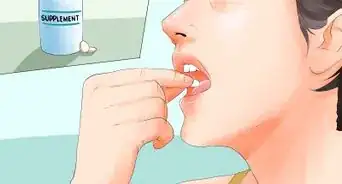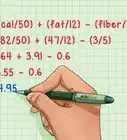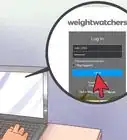This article was medically reviewed by Erik Kramer, DO, MPH. Dr. Erik Kramer is a Board-Certified Primary Care Physician at the University of Colorado. With over 15 years of experience, his clinical interests include obesity and weight management, diabetes care, and preventive care, as well as embracing a holistic approach to primary care. He received his Doctorate in Osteopathic Medicine (D.O.) from the Touro University Nevada College of Osteopathic Medicine and completed his residency at Central Maine Medical Center. Dr. Kramer is a Diplomate of the American Board of Obesity Medicine.
There are 12 references cited in this article, which can be found at the bottom of the page.
wikiHow marks an article as reader-approved once it receives enough positive feedback. In this case, 85% of readers who voted found the article helpful, earning it our reader-approved status.
This article has been viewed 395,993 times.
The Atkins Diet claims that it can help people lose weight quickly, and keep it off, by following a multi-phase plan of eating guidelines. The distinctive features of the Atkins Diet are the avoidance of most carbohydrates and the encouragement of proteins and fats. You can create a meal plan for the Atkins Diet that incorporates a variety of meats, cheeses, nutritious vegetables, and other foods.
Steps
Background
-
1Discuss your diet plans with your doctor. Before beginning the Atkins Diet, discuss your plans with your doctor or healthcare provider. Sticking to the Atkins Diet may mean major changes, and your doctor can advise you on whether or not this is a good idea for you and your overall health.[1]
- The Atkins Diet isn't necessarily for everyone. For instance, breastfeeding mothers and people with severe kidney disease should not begin this diet.
- Following the Atkins Diet can cause some side effects, such as headache, nausea, irritability, and bad breath. Your doctor can discuss the risks with you.
-
2Review the principles behind the Atkins Diet. This plan focuses on reducing or eliminating carbs from your diet, while encouraging the consumption of proteins and fats. The Atkins Diet proposes that controlling the foods in you eat in this way will lead to weight loss and long-term healthy eating.[2]
- There are many resources available online to research the Atkins Diet, as well as books on the topic, like Dr. Robert Atkins' Dr. Atkins' New Diet Revolution and Atkins for Life.
Advertisement -
3Learn about the stages of the Atkins Diet. There are 4 distinct phases to this plan: Induction, Balancing, Pre-maintenance, and Lifetime maintenance. Many people begin at the first phase, Induction, to maximize weight loss. However, you can begin the diet at any of the first 3 phases.[3]
- Working with a dietitian or doctor on this program can ensure that you understand the program to the fullest degree.
Induction Phase
-
1Eliminate almost all carbohydrates from your diet. For the first phase, Induction, you avoid eating nearly all carbohydrates. This includes breads, baked goods, grains, potatoes, sugary foods and drinks, fruits, alcohol, etc. This may be hard at first, so prepare yourself by slowly weaning off carbs in the days leading up to your Atkins Diet start date.[4]
- You may consume no more than 20 grams of net carbs per day, and most of these carbs should come from vegetables, such as asparagus, broccoli, and green beans.
- About 2 cups of loosely packed salad, plus a cup of another vegetable, will equal approximately 20 grams of net carbs from vegetables.
-
2Eat generous amounts of protein-rich foods. In the Induction phase, you should also eat protein at each meal. You can choose from options such as fish, poultry, red meat, pork products, eggs, cheese, or tofu.[5]
- The portion size of these proteins can be generous.
- You do not need to restrict oils and fats.
-
3Focus on “foundation vegetables.” These are low-carb vegetables that are especially beneficial for the first stage of the Atkins Diet, and you are encouraged to eat them throughout the other phases. They include:[6]
- Leafy greens, such as lettuce and spinach
- Crisp greens, such as cucumbers, celery, broccoli, zucchini and green beans
- Other vegetables, such as peas, eggplant, tomatoes, onions, cauliflower, and peppers
-
4Drink plenty of water. During the Induction phase of the Atkins Diet, drink 8 glasses of water per day. This is important to avoid dehydration and constipation.[7]
- If you don’t like plain water, add 1–2 tablespoons (15–30 mL) of lemon or lime juice to give it a burst of flavor.
-
5Follow the guidelines of the Induction phase for at least 2 weeks. If you are beginning the Atkins Diet at the Induction phase, you will need to follow these guidelines for at least 2 weeks to maximize your transition and weight loss. If you want to or need to lose more weight, you may stay in this phase longer.[8]
- Many dieters see rapid weight loss during this phase, mostly because eating a very low-carb diet causes you to lose water weight quickly.[9]
- To maximize your weight loss during this time, try to exercise most days of the week.
-
6Develop a menu plan. Knowing ahead of time what you can and will eat while in the Induction phase will help you succeed at the start of the Atkins Diet. It will keep you organized, focused, and on track. A typical menu for this phase might include:
- For breakfast: a good source of protein, like scrambled eggs, with ingredients like onions and cheese, and 3 breakfast sausages. Coffee, tea, water, or diet soda are acceptable beverages in the Induction phase and throughout the other phases of the Atkins Diet.[10]
- For lunch: a salad with a protein, such as chicken, and an acceptable beverage. Another option is a bacon cheeseburger (without a bun).[11]
- For dinner: Salmon, asparagus, and a salad, and an acceptable beverage. Another option is a shrimp cocktail, baked chicken, and a small salad.
- Snacks (up to 2 per day): An Atkins Diet product (these include shakes, granola bars, etc.), diet gelatin with artificially sweetened whipped cream, or a protein-rich, low-carb snack like celery and cheddar cheese.
Balancing Phase
-
1Reintroduce small amounts of healthy carbs. For the second phase, Balancing, you continue to restrict your intake of carbohydrates. You can consume about 25-30 grams of net carbs per day during the Balancing phase (a minimum of 12-15 grams of net carbs should come from vegetables), as long as your weight loss continues.[12]
- You can begin to reintroduce some nutritious sweet foods, like berries, as well as nuts and seeds.
- You should, however, continue to avoid foods with added sugar.
- Notice how these foods make you feel. Remove them from your diet if the negatives outweigh the positives.
-
2Determine your critical carbohydrate level. For the second phase, you should try to determine the amount of carbs you can have per day while not slowing your weight loss. This is known as your critical carbohydrate level (CCLL). Determining this during the Balancing phase will help you to maintain the Atkins Diet in its later phases.[13]
- You may have to experiment to determine your CCLL by adjusting the amount of carbs that you eat.
- Your personal CCLL depends on a lot of factors, like your age, activity level, gender, hormone balance, and any medications you’re taking.
-
3Expand your menu plan. During the Balancing phase, you can continue to eat the same foods that were acceptable in the Induction phase. In addition, you can expand your meal options to include reintroduced foods. For instance:[14]
- Try mixed nuts as a snack.
- Add berries and/or nuts to a salad for variety.
- Serve nutrient-rich foods like green beans and avocados as a side with your protein at lunch or dinner.
-
4Monitor your weight. Continue eating according to the guidelines of the Balancing phase until you are about 10 pounds (4.5 kg) from your ideal weight.[15] If your weight loss stops, reduce your carb intake.
Pre-Maintenance Phase
-
1Diversify the types of foods you eat. For the third phase, Pre-Maintenance (or “Fine-Tuning”), you can reintroduce fruits, starchy vegetables (such as potatoes), and whole grains. A lack of variety can cause boredom and eventually derail your plan.[16]
- Use this phase as a chance to reintroduce a carbohydrate that you especially prefer—potatoes, grains, or others. Keep in mind that you need to control the amount of your chosen "feel good" carb on an ongoing basis.
-
2Slowly increase your carb intake. You can raise the amount of carbs you eat during the pre-maintenance phase by about 10 grams per week. Cut back on your carb intake, however, if your weight loss stops. Stay in the pre-maintenance phase until you reach your target weight.[17]
- As you reach your target weight and reintroduce carbohydrates, you will develop a new CCLL. Once you determine the CCLL for this stage, just make sure to keep your carb intake at or below this level.[18]
-
3Expand your menu plan. Since you are allowed to eat more types of food during the pre-maintenance phase, you can add more options to your menu. For instance:[19]
- Have a small portion of french fries with your bacon cheeseburger (without a bun) for lunch.
- Supplement your breakfast with a side of a favorite fresh fruit.
- Have a serving of whole grains, such as brown rice or quinoa, alongside a protein like baked chicken or grilled steak for dinner.
- Include slightly higher-carb vegetables and legumes, including: carrots (¾ cup, or about 100 g), acorn squash (½ cup, or about 100 g), beets (1 cup, or 136 g) and potatoes (¼ cup, or 35 g), half an apple, or kidney beans (⅓ cup, or 60 g). Each of these serving sizes has about 10 net carbs.[20]
- Remember to keep the daily amount of carbohydrates you eat under your CCLL.
Lifetime Maintenance Phase
-
1Begin the fourth phase, Lifetime Maintenance, once you reach your target weight. The Lifetime Maintenance is designed as a long-term plan of healthy eating habits. Continue to follow the guidelines of this phase for the rest of your life.[21]
-
2Center your menu plan on proteins and low carb vegetables. As during the other phases of the Atkins Diet, you are encouraged to eat proteins such as red meat, fish, pork, poultry, or tofu. In addition, 12-15 grams of net carbs per day should still come from low-carb, “foundational” vegetables.[22]
-
3Continue to restrict your carb intake. The net carbs you consume should still not exceed the new CCLL set during the pre-maintenance phase. As a rule of thumb, you can consume no more than 90-120 grams of net carbs per day if you exercise. However, you will have a better chance of maintaining your weight if you remain at your pre-maintenance level CCLL.[23]
- You may need to alter your carbohydrate intake depending on your base weight how your weight fluctuates.
Warnings
- Always consult your doctor before beginning a diet.⧼thumbs_response⧽
- The Atkins Diet now acknowledges the importance of exercise in addition to eating right for long-term health.[24]⧼thumbs_response⧽
- Research is not conclusive about the long-term risks or benefits of the Atkins Diet.[25]⧼thumbs_response⧽
- Many nutritionist and doctors oppose the Atkins Diet for reasons including: it may limit carbohydrates but not calories (and thus not lead to weight loss); its encouragement of fats may lead to health problems; it restricts many foods (such as fruits and vegetables) and may be hard to maintain long-term.[26]⧼thumbs_response⧽
References
- ↑ http://www.mayoclinic.org/healthy-lifestyle/weight-loss/in-depth/atkins-diet/art-20048485?pg=2
- ↑ http://www.mayoclinic.org/atkins-diet/ART-20048485?p=1
- ↑ https://www.mayoclinic.org/healthy-lifestyle/weight-loss/in-depth/atkins-diet/art-20048485?p=1%3C/ref%3E&reDate=20062015
- ↑ https://www.mayoclinic.org/healthy-lifestyle/weight-loss/in-depth/atkins-diet/art-20048485?pg=2
- ↑ https://sa.atkins.com/static/default/files/documents/pdf/Atkins%20Food%20List.pdf
- ↑ https://sa.atkins.com/static/default/files/documents/pdf/Atkins%20Food%20List.pdf
- ↑ http://go.galegroup.com/ps/i.do?id=GALE%7CCX2760100033&v=2.1&u=umuser&it=r&p=GVRL&sw=w&asid=264a460165997b08b49f6c9462f59028
- ↑ http://www.mayoclinic.org/atkins-diet/ART-20048485?p=1
- ↑ https://go.gale.com/ps/i.do?id=GALE%7CCX2760100033&v=2.1&u=umuser&it=r&p=GVRL&sw=w&asid=264a460165997b08b49f6c9462f59028
- ↑ http://www.mayoclinic.org/atkins-diet/ART-20048485?p=1
- ↑ http://www.mayoclinic.org/atkins-diet/ART-20048485?p=1
- ↑ http://go.galegroup.com/ps/i.do?id=GALE%7CCX2760100033&v=2.1&u=umuser&it=r&p=GVRL&sw=w&asid=264a460165997b08b49f6c9462f59028
- ↑ https://www.atkins.com/how-it-works/library/articles/how-to-follow-phase-two-part-2
- ↑ https://sa.atkins.com/static/default/files/documents/pdf/Atkins%20Food%20List.pdf
- ↑ http://www.mayoclinic.org/atkins-diet/ART-20048485?p=1
- ↑ https://www.mayoclinic.org/healthy-lifestyle/weight-loss/in-depth/atkins-diet/art-20048485?pg=2
- ↑ https://www.mayoclinic.org/healthy-lifestyle/weight-loss/in-depth/atkins-diet/art-20048485?pg=2
- ↑ https://www.atkins.com/how-it-works/atkins-20/phase-3/doing-it-right-atkins-20-phase-3#acceptable
- ↑ https://sa.atkins.com/static/default/files/documents/pdf/Atkins%20Food%20List.pdf
- ↑ http://go.galegroup.com/ps/i.do?id=GALE%7CCX2760100033&v=2.1&u=umuser&it=r&p=GVRL&sw=w&asid=264a460165997b08b49f6c9462f59028
- ↑ http://www.mayoclinic.org/atkins-diet/ART-20048485?p=1
- ↑ https://sa.atkins.com/static/default/files/documents/pdf/Atkins%20Food%20List.pdf
- ↑ http://go.galegroup.com/ps/i.do?id=GALE%7CCX2760100033&v=2.1&u=umuser&it=r&p=GVRL&sw=w&asid=264a460165997b08b49f6c9462f59028
- ↑ https://www.mayoclinic.org/healthy-lifestyle/weight-loss/in-depth/atkins-diet/art-20048485?p=1%3C/ref%3E&reDate=20062015
- ↑ http://www.ncbi.nlm.nih.gov/pmc/articles/PMC1319349/
- ↑ http://go.galegroup.com/ps/i.do?id=GALE%7CCX2760100033&v=2.1&u=umuser&it=r&p=GVRL&sw=w&asid=264a460165997b08b49f6c9462f59028
About This Article
Once your doctor gives you the green light to begin the Atkins Diet, start planning the Induction phase by replacing carbohydrates like bread, fruit, and alcohol with protein-rich fish and foundation vegetables like spinach. Next, in the Balancing phase, experiment with what you eat to determine your critical carbohydrate level, or the number of carbs you can consume daily without it slowing your weight loss. From here, you'll enter the Pre-Maintenance phase, where you'll slowly begin to increase your weekly carb intake by 10 grams. After you reach your ideal weight, keep following healthy eating habits as a part of the final, Lifetime Maintenance phase. For more tips from our Dietitian co-author, including how to monitor carb intake, read on!

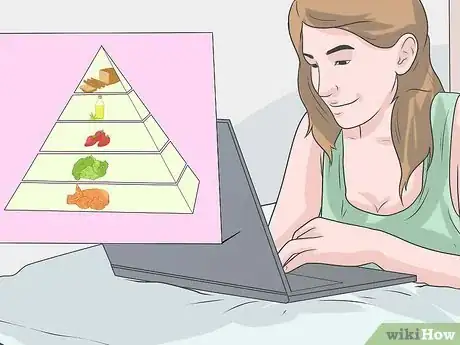
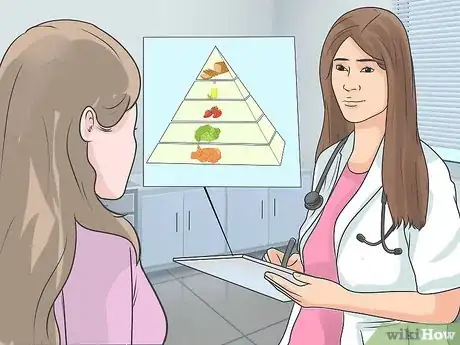


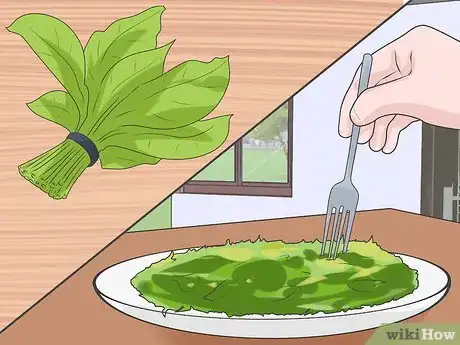

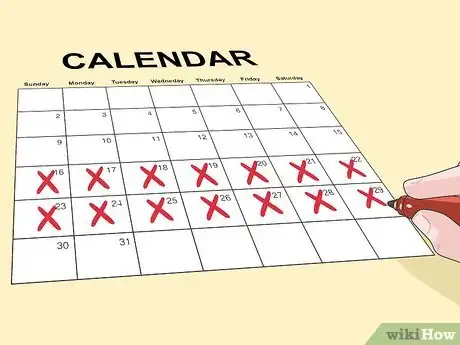


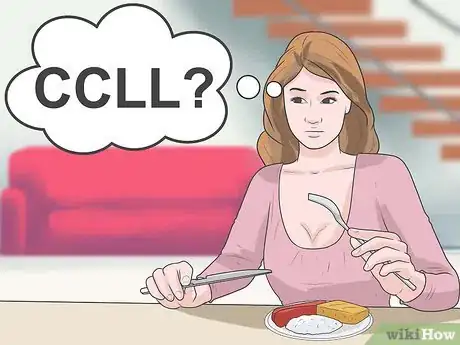


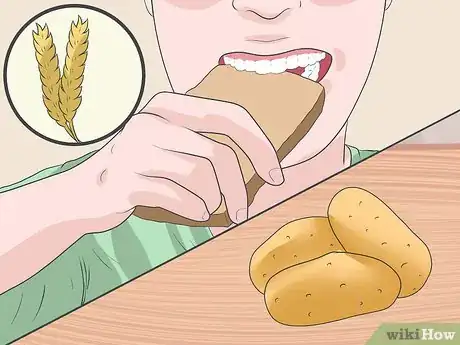

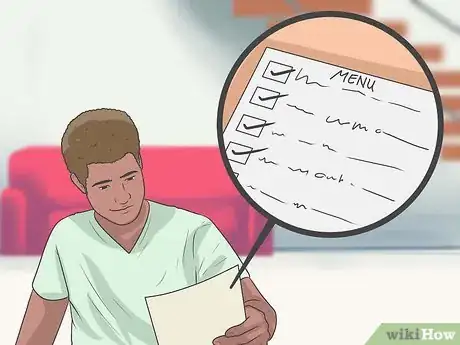
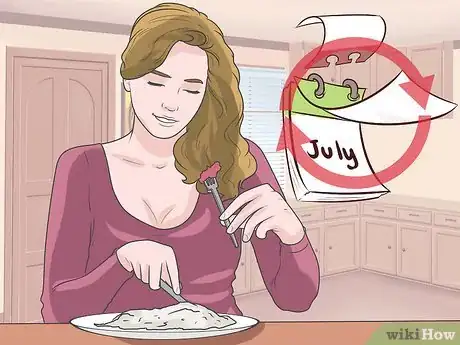
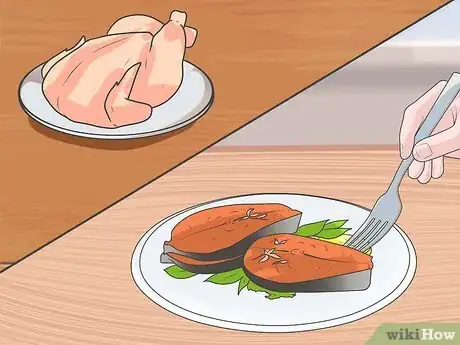



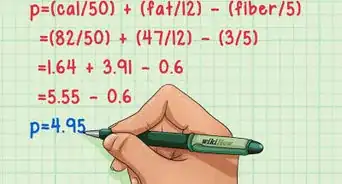


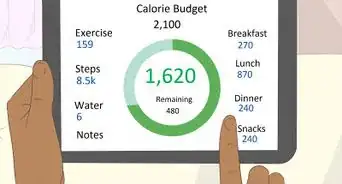
-Plan-to-Do-Step-17.webp)

